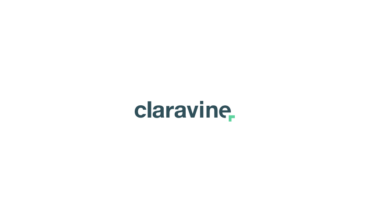A Powerful New Approval Tool to Safeguard Your Data

The Data Standards Cloud now includes an optional measure for adding oversight to the data that users submit. For customers with access to this tool, the approval feature can be enabled to alert one (or many) designated users they need to review and approve (or reject) data before it can be fully processed. For particularly sensitive datasets, this provides an extra layer of optional template-by-template manual validation before new or altered data begins to flow across your ecosystem. And for customers that already have an informal process for data approval in place, this adds an enforceable step to their current approach.
This powerful new feature is easy to turn on and off, but should be used with care. The Data Standards Cloud’s core functionality was created to naturally balance the need for adherence to a standard and the need for process automation. While adding an approver(s) to a template can be a vital addition for some teams, it does add a step in the data submission process for the assigned team member(s) to review and approve, or sometimes correct and comment on data.
When To Use This Feature (Or Not)
Because of the trade-offs inherent in this tool (a pause in the process, manual time), we suggest every customer ask themselves a few questions before deciding to add this step to their workflow:
Do the pre-set fields built into my templates in The Data Standards Cloud already provide the safeguards I’m looking for? Our platform is set-up to help automate data validation by ensuring that your teams adhere to the requirements you set for them in each field of your templates – encouraging them to both complete required fields and comply with your pre-identified set of parameters. However, if you are concerned that someone may technically adhere to a format, but select or add the WRONG information within that format, an extra layer of validation by requiring a request for approval may be warranted.
What is the risk to my data if fields in a dataset are added incorrectly? Even if you are concerned that a user may adhere to a template, but enter incorrect information, that doesn’t necessarily mean that an approval is the right next step. Using this feature leads to slower data processing and requires dedicated team effort. So, before turning it on, you should always quantify the impact of incorrect data. Is this a bit of a nuisance, or does it have significant financial business implications that makes the trade-off worth it?
Can I improve accuracy in other ways? Anytime you are considering adding an approval to a template, you should also take a step back and look at the existing workflows that are leading to this need. Is there anything you can do in addition to (or instead of) adding this step to improve the data creation and submission process. Are the right people using the platform? Are there improvements that could be made to the template to guide their work? Even if you decide you need to assign approvers, this can be a valuable exercise as we’ve found that most processes can be improved.
Do I have the resources to support using this feature (or can I add them)? Finally, there is a very practical question of people resources. Having designated approvers means that someone – or several people – will be notified every time data is submitted for that template. These team members then need to be able to go into The Data Standards Cloud in a timely manner, spend time reviewing submissions, comment on and reject any incorrect fields, and finally approve as ready. As you’d imagine, this involves significant resources and attention from admins which may or may not be possible in your existing team set-up. For some teams this creates minimal disruption, or is simply worth the investment, but this is a factor that is important to consider.
Requests For Approval Done Right
Each customer will have to decide whether this feature makes sense for their unique team needs, but here are a few examples of customers who have seen value in adding this step into their process.
Current Approach Lacks Process
One customer had long ago identified templates that benefited from “expert” approvers before submission. However, they had been implementing this as a suggested practice and found that many submissions weren’t going through the proper people or steps. For them, adding approvals to select templates and assigning expert admins as approvers was a no brainer!
Data is Highly Business Sensitive
Another customer had data that – if submitted incorrectly – could create significant liabilities for their organization. Although making requests for approval added time-intensive steps during submissions, overall they were saving dozens of hours on the back-end that they had previously needed to QA the data entering core systems.
Managing Complicated Agency/Partner Dynamics
Yet another customer had a complex set-up of agencies, partners, and dispersed internal teams creating and managing data. They found that data approval was needed for additional QA, but they didn’t have an easy way to delegate the right people to the right sets of templates. With this feature, they were able to add exactly who they needed as an approver to each template – cutting down group-level notifications and actually making processes move faster.
Still unsure if this feature is the right fit for one of your use cases? Please reach out to your customer success team to discuss your unique pros and cons.



